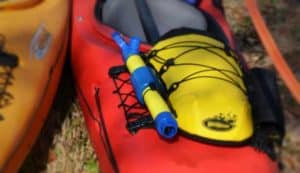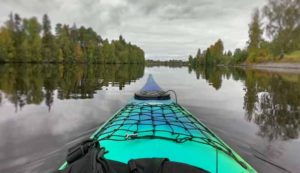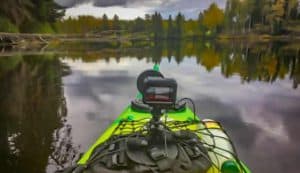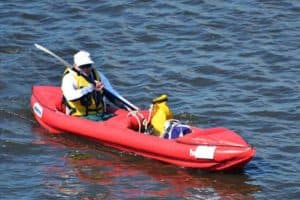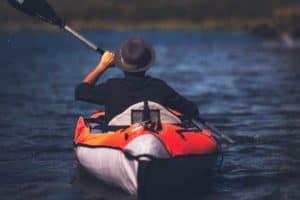This page may have Commerce Content. If you buy something from our posts, we may get a small share of the sale. Click here for more.
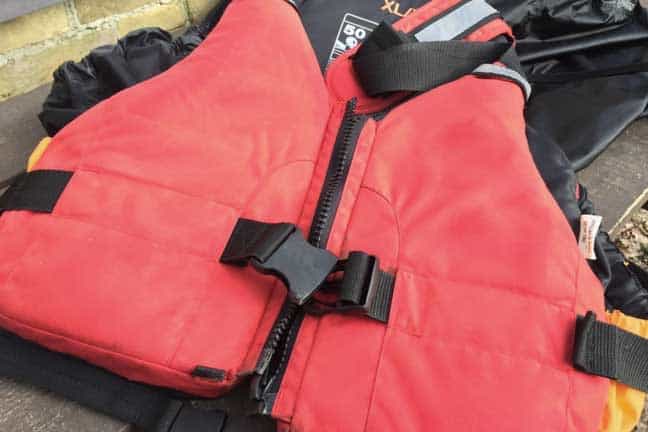

Editor & Article Writer for Outdoor Wilds
Share via:
How To Choose A Life Jacket For Kayaking
We all know that life jackets are essential, whether kayaking, boating, or anything in between.
They really are life savers, so choosing the right one for you is something you want to get right. How to choose a life jacket for kayaking is what I am here to offer some guidance on today.
Table of Contents - Fast Navigation
Size
One of the most important things to keep in mind when choosing a life jacket for kayaking is its size. This is important because on one hand, if the life jacket is too large, it will not effectively keep you afloat; it could come off, or even worse, it could actually choke you.
On the other hand, if it is too small, you just won’t be able to get it over your midsection and shoulders. Also, keep in mind that a good life jacket will come in various size options.
There are those which only come in a single size, but those are usually highly adjustable. One thing to think about is that you will probably be wearing clothes underneath, so you might want to go one size larger than you would actually wear.
It is important that it fits well around the neck and shoulders in order to keep the upper part of your torso and your head afloat.
Adjustability
The adjustability of a life jacket is also very important. If you are kayaking in the summer, you might not wear any clothes underneath it, whereas in the fall you might wear a sweater and a jacket.
Therefore, being able to adjust the life jacket is very important to get a proper fit. Keep in mind that a life jacket that is too loose or too tight will not only be uncomfortable, but won’t work right either; being able to adjust it just right is something important to look for.
What is also important to note is where the life jacket in question is adjustable. For one, the sides and the front should be adjustable. This way you can cinch it tight around your midsection for the best fit.
Moreover, being able to adjust the shoulder pads is important because this will help keep your head afloat, plus it helps with mobility too, especially when it comes to paddling. Life jackets usually do not fit everybody the same, so adjustability is a big deal.
Durability
The next thing to think about is how durable the life jacket in question is. More often than not, you will be better off spending a few extra dollars on something a bit pricier. The old saying does hold true here. You get what you pay for. One of the best materials for life jackets is nylon, specifically high-tenacity or denier nylon.
The main point here is not actually to be durable, although that too is important, but to be buoyant. A good nylon shell, combined with buoyant and durable inner materials are what you need to keep your head above water. In this case, durability has a lot to do with buoyancy.
If your life jacket comes apart at the seams, it probably won’t keep you afloat too well either.
Ventilation
Although not super important, ventilation is something else to look for in a good life jacket. It can get really hot wearing a life jacket for hours on end, especially in the summer and if you are paddling vigorously.
An addition of some kind of mesh or thin material to key parts of the life jacket will make it breathable and will help stop you from getting too hot.
Extra Features
Life jackets often come with extra features, and depending on how much you will use the life jacket, you might want to look for some of these too. For one, some come with pockets, which is convenient for storing your keys and other valuables.
Some even have waterproof pockets to keep phones and other such things safe from water damage.
Many also come with O- or D-rings so you can attach accessories. Another thing to look for is a neck rest, which comes in handy for neck comfort, and to keep you afloat in case of an emergency.
Speaking of emergencies, a little signaling mirror for reflecting light, as well as a whistle, can both be lifesavers too.
Conclusion
Whatever you do, never go kayaking without a life jacket. It might seem like fun and games, until somebody falls in that is not the best swimmer, or happens to bump their head.
Always keep the things we have talked about in mind when buying a life jacket for kayaking. If your also wondering what size and length kayak you may need then take a look at my post on kayak sizes to find out more. Happy paddling folks.
Popular Kayaking Posts
As an Amazon Associate I earn from qualifying purchases. Thank you for helping to support the site.
Last update on 2024-04-26 / Affiliate links / Images from Amazon Product Advertising API
Last update on 2024-05-02 / Affiliate links / Images from Amazon Product Advertising API
Popular Kayaking Posts





